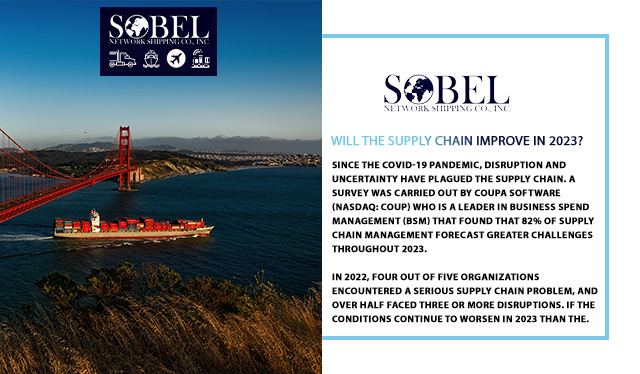Since the COVID-19 pandemic, disruption and uncertainty have plagued the supply chain. A survey was carried out by Coupa Software (NASDAQ: COUP) who is a leader in Business Spend Management (BSM) that found that 82% of supply chain management forecast greater challenges throughout 2023.
In 2022, four out of five organizations encountered a serious supply chain problem, and over half faced three or more disruptions. If the conditions continue to worsen in 2023 than the price of food, computer chips, and gas will continue to increase and face shortages.
There is a multitude of challenges forecast to impact the supply chain and cause major disruptions coupled with rising costs that are in direct relation to production, raw materials, and transportation. Geopolitical uncertainties are also causing an impact on the ongoing Ukraine war.
Currently, supply leaders are concerned about financial and operational problems.
- A deficiency of shipping capacity and dependable transportation.
- Ongoing shortages of goods and critical parts.
- Fluctuations in customer demand.
- Continuing logistical challenges and rising costs associated with technology solutions, supply chain design, and contingency planning.
Dr. Madhav Durbha is the visit precedence of Coupa supply chain innovations. He states, “Consumers continue to face a barrage of shortages of essential goods and are growing impatient with the continued impact on their daily lives. Over the last twelve months, consumers have faced shortages from tampons to Tylenol, and everything in between. With climate change and geopolitical tensions expected to impact food and cause disruptions, now is the time for supply chain leaders to take initiative and be creative as to how they can invest and improve their operations.”
Building healthy supply chain relationships remains a top goal for most supply chain leaders. Suppliers remain the heart of mitigation strategies being implemented over the next six to 12 months.
- 28% are focused on reducing dependency on regional suppliers.
- 28% have started to rely on suppliers located close to distribution facilities and production.
- 31% are focusing on strengthening their relationships with buyers and suppliers.
Durbha goes on to say, “As disruptions persist, it’s critical for organizations to prioritize improving their relationships with suppliers. When supply gets constrained and capacities and materials go on allocation, suppliers tend to prioritize their preferred customers. Organizations are gaining this status as ‘preferred customers’ through collaborating with suppliers by providing visibility into their anticipated demand and ensuring payments happen on time.”
Supply chain leaders are working hard to rethink things in an effort to prevent the consequences of the last few years from continuing to impact consumers. The Coupa report showed that 79% of supply chain leaders want to focus on resiliency and agility. They foresee digital solutions as a key solution. Currently, 83% are investing in digitality in their supply chain within the next 12 months.


